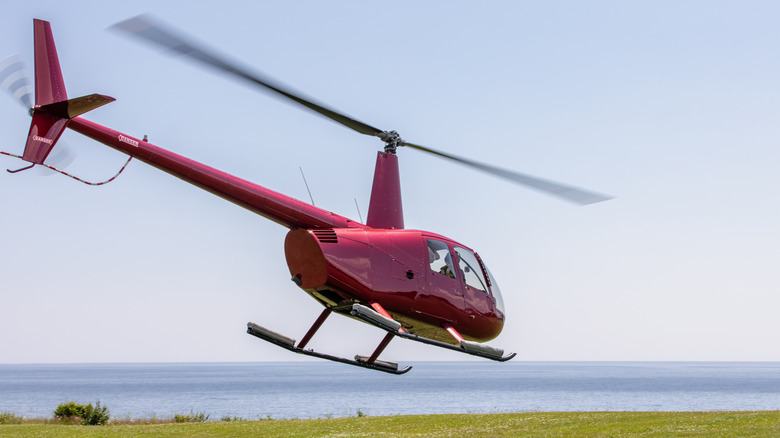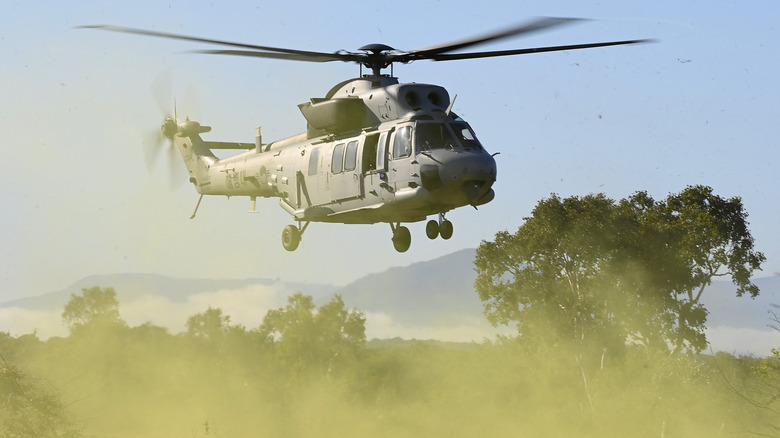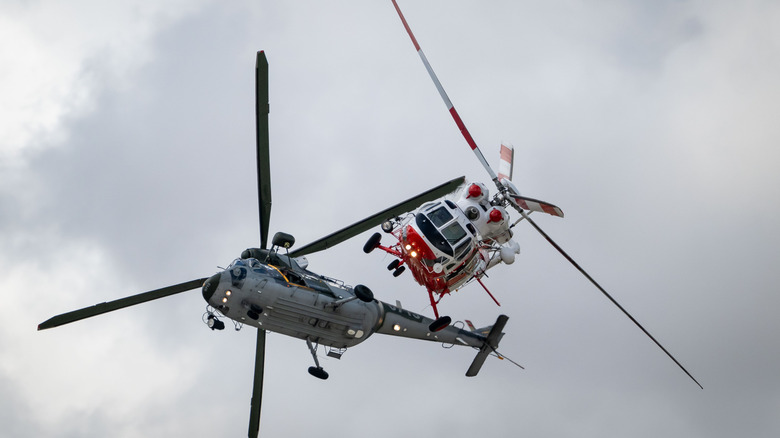Why Most Helicopters Take Off Nose Down, Explained
If you've ever watched a helicopter lift off the ground, you've probably noticed that they always pitch forward, tossing their nose toward the ground. This isn't by accident — in fact, it's crucial to getting the machine airborne. During takeoff, helicopter pilots initiate forward movement using the cyclic stick to tilt the main rotor disk forward. Similar to airplane controls, the cyclic lets the pilot change direction and speed.
Tilting the rotor forward redirects some thrust from vertical to horizontal, generating forward acceleration while maintaining lift. The combination of rotor tilt and lag in momentum around the helicopter's center of gravity resists sudden changes in direction and causes the nose to dip.
This drop is more noticeable in helicopters with a short fuselage moment arm. A nose-down angle is needed to escape the inefficient "air cushion" formed during hover. This is called induced flow recirculation, where the rotor pulls air it has already pushed down, reducing lift. Forward motion moves the helicopter into clean air and out of the vortex. A nose-down position also improves visibility and sets up the helicopter for translational lift. It may not look like much, but this maneuver is key to transitioning out of hover and into controlled forward flight.
Translational life and aerodynamic efficiency
Effective translational lift (ETL) happens when a helicopter builds forward speed and reaches a point where the rotor starts interacting with clean, undisturbed air instead of its own downwash. This increases lift efficiency and reduces the power needed to maintain altitude. ETL usually kicks in around 16 to 24 knots. This aerodynamic improvement allows the helicopter to climb more effectively without increasing collective input. Forward cyclic is maintained to stay nose-down and build enough thrust to reach ETL.
But before ETL is achieved, helicopters encounter the transverse flow effect, which is uneven airflow across the rotor disk, causing vibration and a slight rolling tendency. Pilots compensate using the cyclic stick and pedal inputs to maintain stability. Once ETL is obtained, the helicopter can pitch up into a more neutral or slightly nose-high climb angle. Until then, the forward tilt is important to build speed and airflow effectiveness, forming a bridge between hover and fully aerodynamic forward flight.
Safety, vortex ring avoidance, and recovery
Maintaining a nose-down position angle during takeoff is for more than just efficiency. It's a crucial strategy for avoiding vortex ring state (VRS), a hazardous aerodynamic condition. VRS happens when a helicopter descends vertically with power applied and not enough forward airspeed, trapping the rotor in its own downwash. This causes a turbulent ring of airflow around the blades, resulting in sudden, rapid descent rates and loss of lift. To stop this from happening, pilots must keep continuous forward motion during takeoff transitions. A forward cyclic input keeps the rotor tilted, building airspeed and preventing re-ingestion of downwash.
If VRS does occur, the pilot has to act fast to recover the helicopter by applying forward cyclic, reducing collective to unload the rotor, and using the lateral pedal to sidestep into clean air. A recovery technique developed by Claude Vuichard, known as the Vuichard Recovery, adds lateral cyclic and helicopter tail rotor input to exit the vortex more successfully. This maneuver is widely taught and endorsed by the FAA for training and safety. Understanding VRS is vital for safe vertical operations and emergency preparedness.


